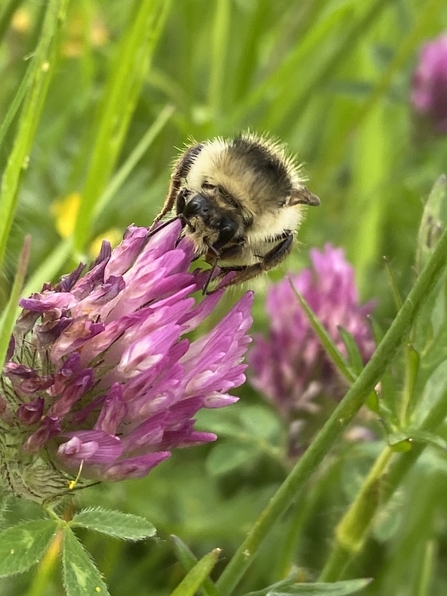This summer, we were thrilled to record our first Shrill Carder Bee (bombus sylvarum) at Bridewell Common nature reserve. This is one of Britain’s rarest and most threatened bumblebees, now found only in a few areas in the UK, including the Gwent Levels, where our conservation work is vital for its survival.
GWT volunteers, Bob Roome and Rosie Saunders, spotted the queen bee foraging on a patch of red clover when they were carrying out their regular butterfly transect on the reserve.
“It's so rewarding to see the hard work of staff and volunteers paying off, as we bring nature back,” says Bob. “Over the last few years, the habitat has been managed to create an ideal location for this small bumblebee to thrive.”
Our action taken to help the Shrill Carder Bee includes:
- Green hay spreading taking seed-rich hay from Great Traston Meadow Nature Reserve to propel progression of wildflower species;
- Establishing a consistent regime of late summer cutting and grazing management, leaving some areas uncut for the bees’ benefit;
- Restoring ditches - the ditch margins on the Gwent Levels offer connectivity of habitat and good nesting sites.

